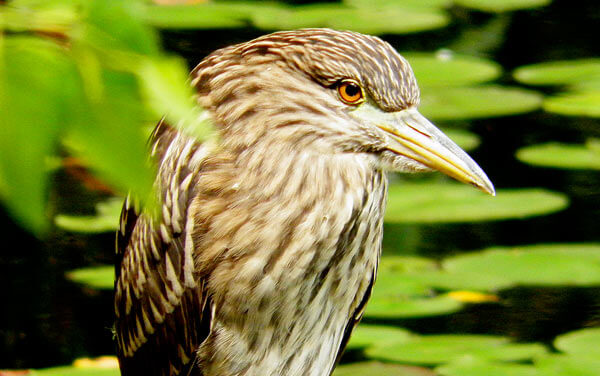By Michael Givant
Two weeks after Tropical Storm Irene brought drenching rain, canceling Jamaica Bay’s annual Shorebird Festival, my friend Walter and I go there to see the fall migration, which I hope will include shorebirds.
In marsh grass, lush and thick from soaking rains, are several great egrets. One walks looking at the ground, its neck scrunched like a cane handle while the other holds its neck high looking stately.
In the relatively empty West Pond there are 20 dabbling ducks called shovelers because their long, broad bills resemble snow shovels. Tilting their heads into the water, raising their rears and showing orange legs, they feed on aquatic vegetation. In the bay a snowy egret nicknamed “golden slippers,” because of its black legs and bright yellow feet, stands on black mud highlighting its feet, which are used to stir the muck and raise prey.
Above the bay, a herring gull with head and bill down circles descending, then hesitates. It does this repeatedly, coming lower each time. Finally splashing down, the gull quickly takes off flying low to the water carrying something in its yellow bill. Landing on smooth sand, it throws down a crab it has caught and begins to dismember and eat the unfortunate crustacean.
Glossy ibises, birds with long, down-curved bills are, in summer, a russet brown and show some iridescent green. One is walking in dark tan grasses looking dark green on the sides and dark gray on its back. This could be a first winter glossy ibis or an adult non-breeding one.
Soon Walter says, “There’s a cormorant hanging itself out to dry.”
One is standing on a stick in the water, its wings spread wide. Surrounded by tan and dark grasses, the scene looks like fall even though autumn is officially almost two weeks away.
A kingfisher with its spiky crest and long bill disappears into a tree’s lush foliage. We wait and the bird flies arrow-like at a 45-degree angle to the water and back up disappearing behind a bush before we can see if it has caught a fish. By some pilings in the bay there are three laughing gulls already in winter plumage. Is fall here or just around the corner?
On the refuge’s east side at Big John’s Pond, standing on branches just above the water, are what we will later determine are two immature black-crowned night-herons. Watching from a blind, I’m amazed, as last June I watched an immature yellow-crowned night-heron in this same spot. Immature night-herons are difficult to identify, but these guys are giving us long, close views. We whisper so as not to scare them off.
The eyelid of one appears to be yellow/green while the area in front of the eye is the same color and the bill’s lower mandible is yellow, looking oddly like a ripening banana. On the far side is another immature night-heron, but is too far to see well. It soon flies to a tree and disappears.
There’s a third immature black-crowned higher in a branch near the other two. Is this a convention? One of the black-crowns, low to the water, yawns and shakes its head. The other soon flies to the branch joining its friend.
We and the others in the blind are soon talking in normal tones, as the birds apparently are not frightened by the sound. What a day it has been! We have seen no shorebirds, but these night-herons have more than made up for any disappointment.
Regardless of the season, Jamaica Bay never fails to impress.



































